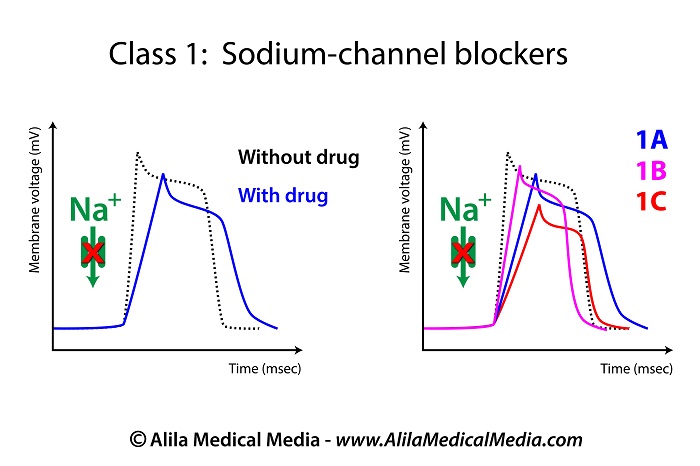Antiarrhythmic Drugs Explained Clearly
Mechanisms of Action of Antiarrhythmics explained in 4 min - It's mind-boggling how easy it is!
This lesson includes an animated video lecture, downloadable images, quiz questions and a PDF
Antiarrhythmic agents are drugs used to suppress abnormal rhythms of the heart. They act to either:
- interfere with the dynamics of cardiac action potentials by blocking a certain ion channel,
or
- block the sympathetic effects of the autonomic nervous system on the heart, to slow down heart rate.
There are 5 classes of antiarrhythmic drugs:

Class I agents are divided further into subclass IA, IB and IC. These subclasses differ in the strength of sodium channel blockage, and in their effect on the duration of action potentials and the effective refractory period (ERP).
Subscribe to one of the courses below to continue!
This content is available within the following courses:

Our Signature Animated Videos on Electrocardiography: 25 animations, plus downloadable PDFs, downloadable images, and quizzes.

Our Signature Animated Videos on Electrocardiography: 25 animations, plus downloadable PDFs, downloadable images, and quizzes.